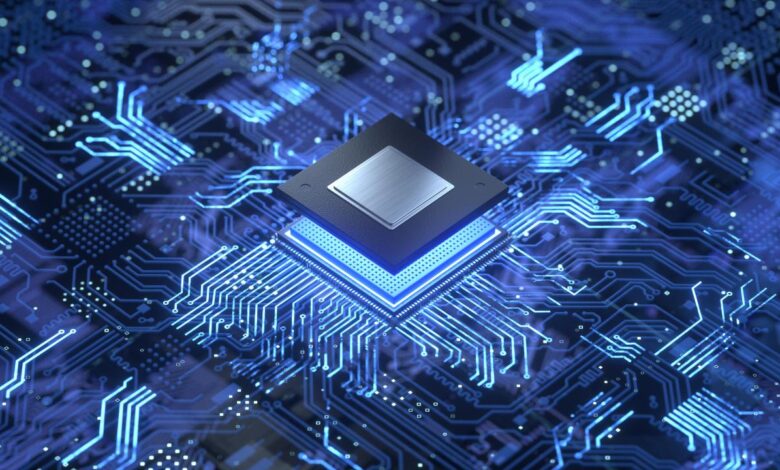
The Semiconductor Choke Point A Global Crisis
The semiconductor choke point isn’t just a tech buzzword; it’s a global crisis quietly reshaping our world. From the smartphones in our pockets to the cars we drive, semiconductors are the unsung heroes powering modern life. But a perfect storm of geopolitical tensions, supply chain disruptions, and surging demand has created a critical shortage, impacting everything from our daily conveniences to national security.
This post dives deep into the heart of this complex issue, exploring its origins, consequences, and potential solutions.
We’ll trace the historical context of this shortage, examining how decades of globalization and reliance on a few key players have left us vulnerable. We’ll look at the industries hit hardest – from automotive manufacturing to consumer electronics – and analyze the economic ripple effects, including inflation and supply chain bottlenecks. But this isn’t just a story of problems; we’ll also explore innovative solutions, from technological advancements to strategic policy changes, that could help us navigate this challenging landscape and build a more resilient future.
Defining the Semiconductor Choke Point

The global economy faces a significant challenge: the semiconductor choke point. This refers to the critical dependence on a relatively small number of companies and geographical regions for the production of semiconductors, essential components in virtually all modern electronics. A disruption in this supply chain can have cascading effects, impacting numerous industries and potentially slowing global economic growth.The current situation is the culmination of several decades of trends.
Initially, semiconductor manufacturing was distributed more broadly. However, over time, the increasing complexity and cost of fabrication facilities (fabs) led to consolidation within a few leading companies, primarily located in East Asia, particularly Taiwan and South Korea. This concentration, coupled with the increasing global demand for semiconductors fueled by the rise of smartphones, computers, and the Internet of Things, created a vulnerability.
Geopolitical tensions, natural disasters, and even pandemics can now easily disrupt the supply chain, leading to shortages and price increases.
Industries Most Vulnerable to Semiconductor Shortages
The automotive industry has been particularly hard hit by semiconductor shortages in recent years. Modern vehicles rely heavily on microcontrollers for everything from engine management to infotainment systems. The shortage led to significant production cuts and long waiting lists for new cars. Similarly, the consumer electronics industry, encompassing smartphones, laptops, and gaming consoles, has experienced disruptions due to limited semiconductor availability.
Healthcare, too, is vulnerable, as medical devices increasingly rely on sophisticated electronics and embedded semiconductors. The manufacturing sector, with its reliance on automation and robotics, also faces significant challenges during periods of semiconductor scarcity. These industries highlight the widespread impact of a constrained semiconductor supply.
Comparison of Different Semiconductor Types and Their Impact, The semiconductor choke point
Semiconductors are not a homogenous group. Different types, with varying functionalities and manufacturing complexities, contribute differently to the choke point. For example, memory chips (DRAM and NAND flash) are crucial for data storage in computers and smartphones, and their production is highly concentrated in a few companies. Logic chips, which perform the processing functions in devices, are also vital and their fabrication requires advanced technology.
Analog chips, which handle signals from the real world, are also critical, especially in automotive and industrial applications. The impact of a shortage varies depending on the specific type of semiconductor: a shortage of memory chips might primarily affect the availability of consumer electronics, while a shortage of power management integrated circuits (PMICs) could severely impact the automotive industry.
The complex interplay between these different semiconductor types and their varying production capabilities contributes to the overall fragility of the global supply chain.
The semiconductor choke point is a multifaceted challenge demanding a multifaceted response. While the immediate future remains uncertain, the crisis has highlighted the critical need for diversification, innovation, and international cooperation. By investing in research and development, strengthening supply chains, and fostering a more equitable global distribution of semiconductor manufacturing, we can mitigate future risks and ensure a stable supply of this essential technology.
The journey towards a more secure and resilient semiconductor ecosystem won’t be easy, but it’s a journey we must embark on together.
The semiconductor choke point is a serious issue, impacting everything from our smartphones to advanced weaponry. This shortage is particularly relevant considering the escalating space race; the success of projects like spacexs starship and the new race to the moon between america and china hinges on access to cutting-edge chips. Ultimately, securing a reliable semiconductor supply chain is crucial for maintaining a competitive edge in this new space age.
The semiconductor choke point is a serious issue, impacting everything from cars to smartphones. It’s a global problem, and the potential for widespread disruption is huge, leading to passionate debate – even on college campuses, where, as you can see from this article on how americas college heads revise rules for handling campus protests , students are increasingly vocal about pressing issues.
This increased activism highlights the far-reaching consequences of the semiconductor shortage, further emphasizing the need for innovative solutions.
The semiconductor choke point is a serious issue, impacting everything from cars to smartphones. It’s crazy to think about how reliant we are on these tiny components, and the geopolitical implications are huge. Reading about this, I stumbled across this article discussing Senator Sanders’ climate change plan, which frankly, is disturbing: senator sanders plan to fight climate change with third world population control is disgusting stuart varney.
The whole thing makes me even more aware of how interconnected global issues are, and how a disruption in one area, like semiconductor production, can ripple outwards and affect seemingly unrelated debates.





